Massage therapy offers a plethora of techniques, each tailored to suit different needs. Among these, “Tapotement massage” emerges as a standout, with its own distinctive rhythmic motions that originate from the French word ‘tapoter’ meaning ‘to tap or pat.’

Tapotement is a type of massage that belongs to the ‘percussion’ massage family. Consider tapping on the skin to be a musical beat played for the health and wellness of our bodies.
Specific Techniques in Swedish and Other Massages
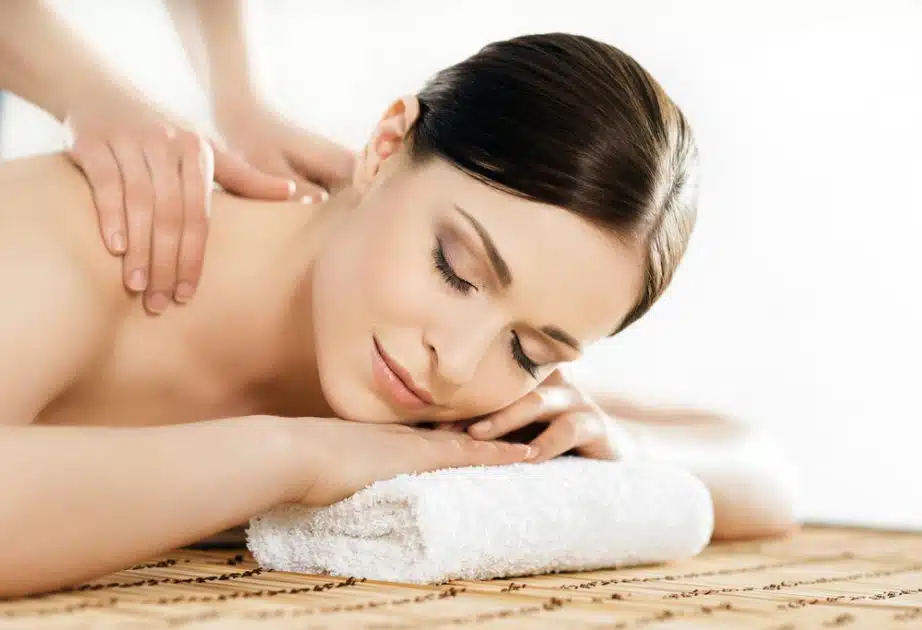
A Pillar of Swedish Massage
This is a foundational technique of Swedish massage, which consists of five basic methods: effleurage, petrissage, friction, vibration, and tapotement. Tapotement is used at the beginning and end of this piece. It’s similar to the strong drumbeat at the start and finish of a musical performance, invigorating the skin and rejuvenating the entire body.
Rhythmic Tapping
Taps that are soft yet strong, generally utilizing fingers or cupped palms, are excellent for improving blood flow and muscle preparation.
Hacking Technique
Consider this a deep, almost slicing action aimed at penetrating the muscles deeply. It’s excellent for muscle rejuvenation and stress alleviation.
Cupping
A gentler approach in which the therapist applies suction to the skin, promoting blood flow and relaxation.
Integration into Other Massage Types
Tapotement methods, often linked with Swedish massage, are now showing up in other massage styles too. They’re not just for sports massages anymore, helping with muscle prep and recovery, but also in spa treatments for that ultimate relaxation vibe.
Therapists mix these methods with others like deep tissue or Thai massage to craft a unique experience tailored to each person’s needs and preferences. Tapotement isn’t just a Swedish massage thing; it’s a versatile set of methods used in a range of therapies.
Its rhythmic feel and range of pressure options cater to various needs and tastes. Whether you crave deep muscle relief or a gentle reset, tapotement methods are a must-have in modern massage sessions.
Various Techniques under Tapotement
Let’s dig into a deep examination of the numerous tapotement processes, focusing on their distinct qualities and applications:
1. Cupping
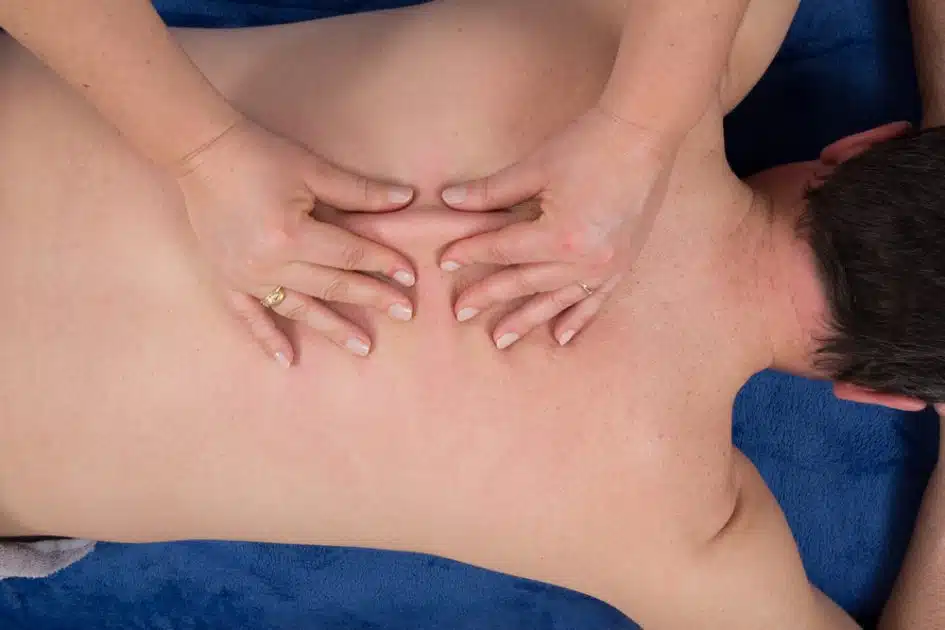
Cupping is a rapid and rhythmical movement with cupped hands that creates a suction-like sensation on the skin. It’s recognized for activating the underlying muscles and improving blood circulation, making it a perfect choice for both relaxation and invigoration. Some therapists may also use it to treat respiratory problems and boost overall health.
2. Hacking
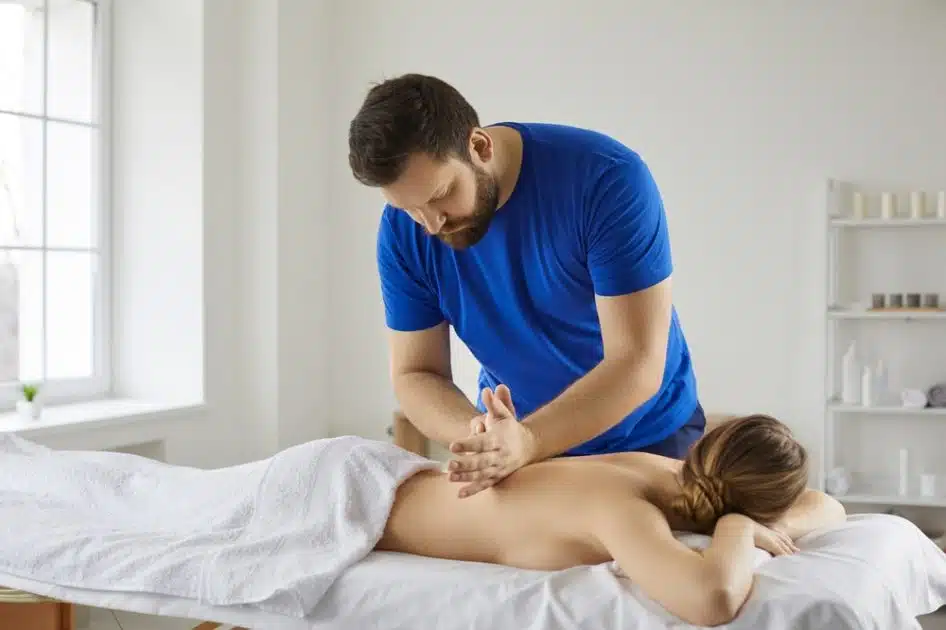
A series of deep and fast motions are used in the hacking method to release muscle stiffness and knots. The hands alternatively strike the body in a chopping motion, working deep into the tissues. It is especially good for sportsmen and individuals who suffer from chronic muscular tightness.
3. Plucking
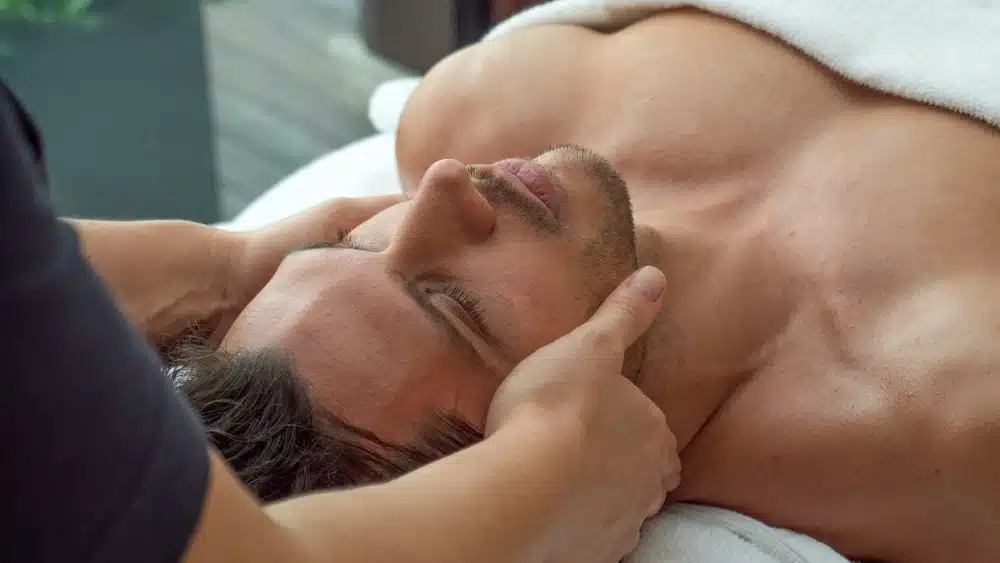
A delicate method in which the skin is softly squeezed to provide a relaxing effect.
4. Pounding

Pounding is a more aggressive procedure that skilled therapists may employ to reach deeper muscle layers. The hands make a flat or loose fist and pound in a rhythmic motion. This technique can aid in the release of deep-seated tension and is frequently used in sports massage to prepare muscles for strenuous activity.
5. Pummelling

These strenuous techniques are intended for deeper muscle layers and are ideal for athletes or individuals who want deeper muscle stimulation.
6. Tapping
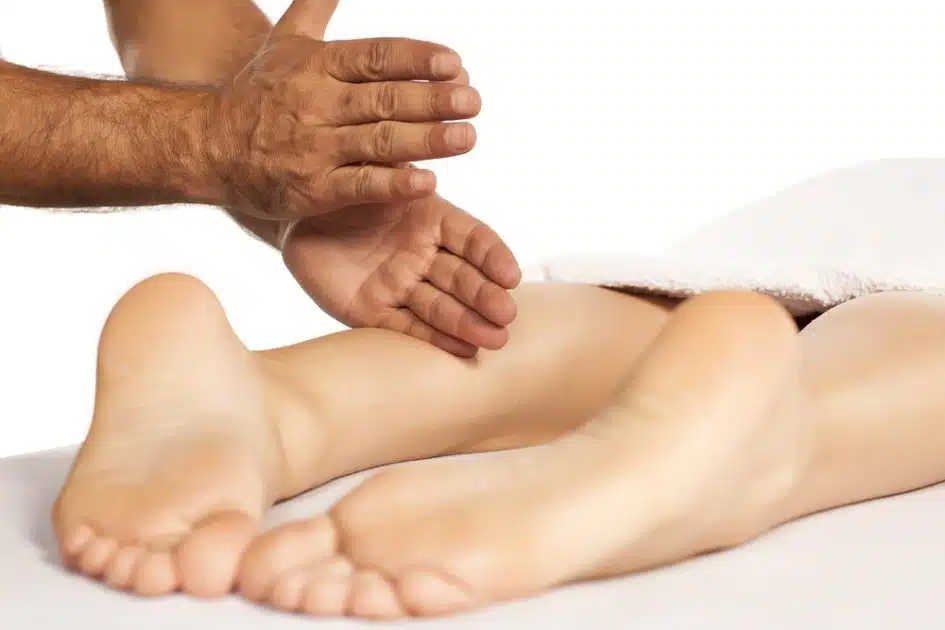
A milder way to introduce the body to the massage, usually starting the session.
Tapotement, though primarily associated with Swedish massage, also finds its place in other massage forms, including sports massages and spa treatments, adapting to fit the needs of the individual.
Therapists frequently successfully blend these approaches to produce a personalised massage experience that responds to the client’s particular demands. Tapotement methods, whether employed alone or in conjunction with other massage kinds, continue to play an important role in the area of massage treatment.
Understanding Hacking
Hacking may appear violent, yet it is an art form in the hands of a professional therapist. It entails hitting the pinky fingers rhythmically, generating a sensory experience that mixes touch and sound. Among the advantages are:
The Method Has Been Revealed
Hacking may sound violent, but it is a skill that expert massage therapists have perfected. It entails:
Finger Positioning: Utilizing the lateral borders of the fifth fingers, hands are formed into loose fists, with the pinky fingers ready to strike.
Alternating Strikes: The hands strike alternately, creating a rhythmic pattern.
Sound and Sensation: A distinct sound accompanies the sensation, adding a characteristic auditory element to the therapy.
Benefits of Hacking
The art of hacking in massage therapy has a far-reaching impact, not only addressing the physical needs but also resonating with mental well-being. Below are the elaborate insights into its manifold benefits:
Physical Stimulation
- Energizes the Body: Hacking revitalizes and awakens the targeted areas, creating a sensation of liveliness and energy.
- Improves Circulation: The rhythmic striking helps boost blood circulation, enhancing the overall function of the cardiovascular system.
- Relieves Muscle Tension: It can ease tightness and tension in muscles, paving the way for relaxation and reducing the potential for spasms.
Skin Rejuvenation
- Enhances Skin Appearance: By stimulating the skin cells, hacking encourages new cell growth, often leading to a brighter and more youthful appearance.
- Aids Detoxification: The increased blood flow helps to flush out toxins from the skin, contributing to clearer and healthier skin.
- Increases Elasticity: Hacking aids in improving skin’s elasticity and firmness by encouraging collagen production, which can minimize signs of aging.
Muscle Preparation
- Pre-Exercise Warm-Up: Particularly popular among athletes, hacking serves as a dynamic warm-up routine, ensuring muscles are ready for exertion.
- Reduces Risk of Injury: By preparing the muscles effectively, hacking minimizes the chances of strains, sprains, or other common athletic injuries.
- Enhances Performance: It can be a crucial part of an athlete’s preparation, enhancing overall performance by increasing flexibility and range of motion.
Mental Focus and Readiness
- Stimulates Mindfulness: The rhythmic nature of hacking can induce a meditative state, helping to clear the mind and focus on the present moment.
- Enhances Concentration: Ideal for pre-competition or demanding mental tasks, hacking helps sharpen concentration and mental acuity.
- Builds Mental Resilience: The stimulation also builds a sense of mental fortitude and readiness, equipping individuals to face challenges with confidence.
- Reduces Stress and Anxiety: By aligning the mind and body, hacking can be a therapeutic tool to alleviate stress, anxiety, and other emotional burdens.
Hacking is a strong instrument in the hands of trained therapists, generating a dramatic influence on individuals who experience it, whether it’s about preparing for a big game, improving skin look, or cultivating mental resilience.
This interaction between body and mind, rhythm and touch, distinguishes hacking as more than just a form of treatment, but also an orchestration of human vigor and calm.
Tapotement in Sports
Tapotement, a rhythmic massage technique, has found a significant place in the domain of sports. By utilizing varied techniques like hacking, cupping, tapping, and more, it caters to athletes’ specific needs, aiding in preparation, performance, and recovery. A quick tapotement session before a game or competition stimulates the muscles, awakening them from a state of rest to active readiness.
It increases blood circulation, ensuring that muscles receive adequate oxygen and nutrients, priming them for peak performance. The invigorating sensation not only preps the body but also instills a sense of confidence and mental focus essential for competing. It helps in loosening up the muscles, allowing for greater flexibility and range of motion, an important factor in many sports disciplines.
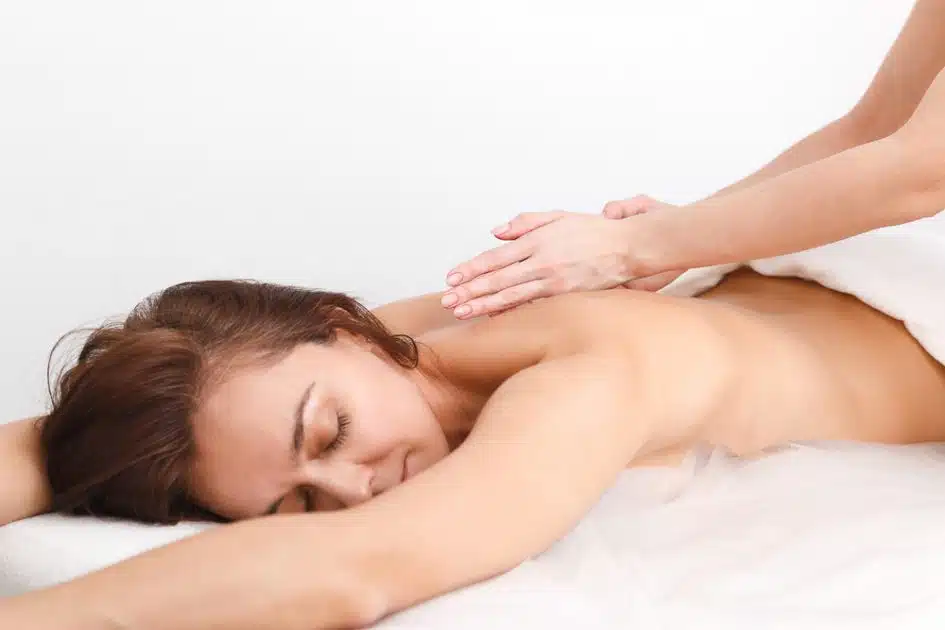
Post-exercise or competition, tapotement aids in reducing muscle soreness, alleviating discomfort, and accelerating the healing process. By working on fatigued muscles, it restores energy and vitality, allowing athletes to recover faster and return to training or playing sooner.
Tapotement also helps in flushing out lactic acid and other metabolic waste products from the muscles, promoting overall well-being, and providing mental relaxation, helping athletes to unwind and refocus after an intense performance.
Regular tapotement sessions can play a therapeutic role in addressing chronic muscle problems, strains, or imbalances that often plague athletes. By working on persistent issues, it improves overall muscle function, leading to enhanced performance in the long run.
Regular application of these techniques also serves as a preventive measure, reducing the likelihood of recurring injuries or strains. Professional therapists can tailor the tapotement techniques to target specific chronic issues, creating personalized therapy plans that resonate with individual athletic needs.
Tapotement is far from being a mere relaxation technique; it stands as a robust tool in the arsenal of sports therapy. It serves the athletes in their relentless pursuit of excellence, offering a unique blend of physical readiness, recovery, and chronic issue management.
Whether gearing up for a sprint on the track or a clash on the football field, tapotement is proving to be an essential companion in sports, symbolizing the beautiful synergy of strength, agility, and holistic well-being. It’s not just a massage; it’s a sportive rhythm that echoes the heartbeat of champions.
Benefits of Tapotement
1. Increased Blood Flow: Stimulates Healing
Tapotement techniques, particularly rhythmical actions like cupping and pounding, encourage the blood to flow more freely throughout the body. By increasing blood circulation, these methods can speed up the healing process, deliver more nutrients to the cells, and aid in the removal of waste products.
2. Strengthens Immune System: Enhances Overall Wellness
The stimulating nature of tapotement massage can have a positive effect on the immune system. By promoting better lymphatic drainage and increasing white blood cell activity, it supports the body’s natural defense mechanisms, contributing to general health and resistance to illness.
3. Rejuvenates Mind and Body: Increases Focus
The invigorating effects of tapotement techniques can awaken the senses and sharpen mental focus. This makes it a preferred choice for those seeking to enhance concentration or prepare for an event that requires mental clarity. Whether pre-exam or pre-meeting, a quick tapotement session can give that much-needed mental boost.
4. Stress and Anxiety Relief: Promotes Relaxation
Though known for its stimulating effects, tapotement can also induce relaxation, helping to alleviate stress and anxiety. Techniques like tapping and plucking can calm the nervous system, allowing the mind to unwind. This dual nature of stimulation and relaxation makes tapotement an adaptable tool in managing stress.
5. Aids Athlete Recovery: Speeds Up Post-Workout Recovery
For athletes and fitness enthusiasts, tapotement offers specific benefits for recovery. The increase in blood flow helps to flush out lactic acid and other metabolic waste products from the muscles, speeding up recovery time. Techniques like hacking and pummeling can also relieve muscle tightness and reduce soreness, contributing to a more effective post-workout recovery phase.
The versatility of tapotement techniques makes them valuable in a wide array of contexts. From the everyday person seeking relaxation and rejuvenation to the professional athlete aiming for optimal performance, tapotement caters to diverse needs. Its ability to both invigorate and relax allows therapists to customize treatments to suit individual preferences and requirements. As a result, tapotement continues to be a sought-after approach in massage therapy, offering a holistic blend of physical and mental well-being.
Recommended:
Oncology Massage
The Bottom Line
Tapotement massage, with its distinctive rhythmic tapping, patting, and cupping techniques, stands as a vital component in the world of therapeutic massage. Originating from the French word ‘tapoter,’ meaning ‘to tap or pat,’ tapotement transcends mere physical application.
It not only invigorates the skin and underlying muscles but also resonates with mental well-being, enhancing focus and relaxation. From the serene environment of a spa to the high-energy arena of sports, tapotement finds application in diverse fields, aiding in detoxification, rejuvenation, and preparation. It embodies a harmonious blend of tradition and innovation, uniting various techniques like hacking, plucking, and pounding to create a personalized healing experience.
Whether you’re an athlete seeking optimal performance or an individual yearning for a stress-relieving session, tapotement massage offers a pathway to holistic wellness, underlining the profound connection between mind and body.
FAQs
What is a tapotement massage?
Tapotement massage is a percussive technique involving rhythmic tapping, patting, or cupping motions, often used in Swedish massage.
What is the use of tapotement?
Tapotement is used to stimulate blood flow, invigorate muscles, aid in relaxation, and promote overall wellness.
What is a tapotement movement?
A tapotement movement is a rhythmic, percussive action performed with the hands or fingers to stimulate the skin and underlying tissues.
What type of massage movement is tapotement?
Tapotement is a type of percussive massage movement, characterized by tapping or pounding, commonly found in Swedish and other therapeutic massages.
How do you perform a tapotement massage?
A tapotement massage is performed by using rhythmic tapping, hacking, or cupping motions with the hands or fingers on the client’s body, often tailored to specific needs and preferences.

















